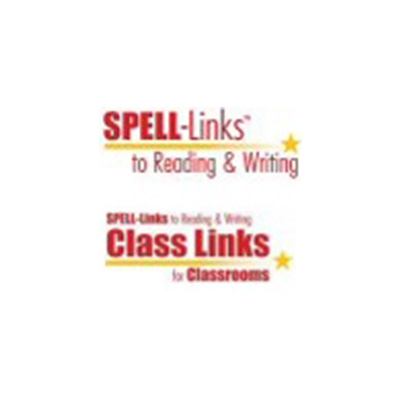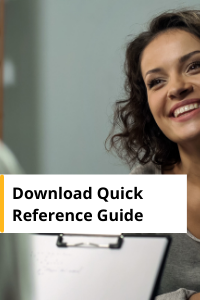Jan Wasowicz, PhD, Kenn Apel, PhD, Julie J Masterson, PhD, Anne Whitney, EdD
Overview:Instruction and intervention products for your struggling readers. Suitable for students with dyslexia.
Age Range:K-12 (SPELL-Links), K-2 (Class Links for Classrooms)
Administration:Paper-and-pencil (with online printable resources)
RTI Tiers:1, 2 or 3
Completion Time:Variable
Publication Date:2012 (SPELL-Links), 2017 (Class Links Books 1 & 2)
Develop and Enhance Your Students’ Reading and Spelling Skills
SPELL-Links™ to Reading and Writing and Class Links use a speech-to-print word study approach that leverages the brain’s innate, biological wiring and organization for oral language. Unlike other reading programs which begin with the written letter and teach students to match the letter to a sound, SPELL-Links and Class Links students first learn how to attend to the sound structure of spoken English words and then how to connect and combine sounds (phonology), letter patterns (orthography, mental orthographic images), and meanings (semantics, morphology) to read and spell words. This is exactly how the brain works in good readers and writers!
Students also develop meta-linguistic skills and build executive function skills that empower them to independently apply their word study knowledge, skills, and strategies to successfully and independently read, write, and spell every day, not just during the classroom lesson or on the weekly test.
Which one do I choose?
SPELL-Links to Reading & Writing delivers all components of assessment and instruction identified by the US Department of Education funded Center on Instruction as crucial for developing reading and spelling skills in every student.
The individualized and flexible design of SPELL-Links to Reading & Writing ensures that there is a word study solution for everyone! You can count on SPELL-Links to improve all aspects of literacy—reading, writing, spelling, speaking, listening, and vocabulary—of Tiers 1, 2, & 3 students as well as Special Education, Speech-Language Impaired, ESL, Title I, and students with dyslexia.
Class Links, which is based on SPELL-Links, provides everything you need to deliver a year of high-quality, hands-on Tier 1 classroom instruction to meet all the educational development standards for Reading Foundational skills, along with many other English Language Arts Standards including: spelling, word decoding, reading fluency, vocabulary, reading comprehension, and writing. The curriculum includes quick and easy lesson plans for word study to improve reading and writing success and downloadable mini-books that help students apply taught skills.
Class Links Book 1 Skills and Content
- Rhyming
- Segmenting syllables & phonemes
- Vowel discrimination
- Alphabetic principle
- Letter-sound relationships for consonants ‘b, p, t, d, v, z, k, j, f, s, m, n, x, r, l, g, h, w, y, q’ and all short vowel sounds
- Letter patterns & spelling rules
- Vocabulary knowledge
- Mental orthographic images of words
- Spelling
- Decoding
- Reading fluency
- Reading comprehension
- Writing
Class Links Book 2 Skills and Content
- Rhyming
- Segmenting syllables & phonemes
- Vowel discrimination
- Alphabetic principle
- Letter-sound relationships for consonants ‘k’ and hard ‘c’; ‘r, l’ after a vowel; /z/ sound spelled with ‘s’, consonant digraphs ‘ng, th, wh, sh, ck’ and double consonants ‘ff, ss, zz, ll’
- Letter patterns & spelling rules
- Vocabulary knowledge
- Mental orthographic images of words
- Spelling
- Decoding
- Reading fluency
- Reading comprehension
- Writing
Flyer
Research and Results
Research Base for SPELL-Links and SPELL-Links Class Links for Classrooms
Jeanne Wanzek, Brandy Gatlin, Stephanie Al Otaiba & Young-Suk Grace Kim (2016) The Impact of Transcription Writing Interventions for First-Grade Students, Reading & Writing Quarterly, 33:5, 484-499, DOI: 10.1080/10573569.2016.1250142
Outcomes Report: SPELL-Links to Reading & Writing
(2005) Monograph No. 1, Evanston, IL: Learning By Design, Inc.
(Data also published as: Integration of language components in spelling: Instruction that maximizes students’ learning. (2004) Apel, K., Masterson, J.J., & Hart, P. Language and Literacy Learning in Schools, New York: Guilford Press.)
Outcomes Report: SPELL & SPELL -Links to Reading & Writing
(2005) Monograph No. 2, Evanston, IL: Learning By Design, Inc.
(Data also published as: The effects of a multiple linguistic, prescriptive approach to spelling instruction: A case study. (2004) Kelman, M. & Apel, K. Communication Disorders Quarterly, 25, 2, 56-66.)
-
K-12 SPELL-Links for Reading and Writing intervention
Learn more about the rationale and content of the K-12 SPELL-Links for Reading and Writing intervention program.
K-2 SPELL-Links Class Links for Classrooms
Learn more about the rationale and content of the K-2 SPELL-Links Class Links for Classrooms teacher-friendly instructional program.

Pre-recorded Webinars
-
After Dyslexia Screening: There’s Work to Be Done—Let’s go!
Presenter: Jan Wasowicz, Ph,D., CCC-SLP

Overview
Universal screening for dyslexia is an important first step in identifying and helping students with dyslexia and other language-based reading and writing problems. It’s what happens after the screening that determines if identified students receive the intervention they need to achieve the outcomes all stakeholders want to see. In this webinar, you’ll learn how to precisely match diagnostic assessment data with specific multi-linguistic lessons and activities that target the individual student’s underlying linguistic deficits and remediate reading and writing deficits using structured literacy intervention. You’ll become familiar with how to use this multi-linguistic intervention program to monitor student progress and how to use the collected data for informed decision-making.
Learner Outcomes
As a result of this activity, the participants will be able to:
- State the goal of each of four steps in the process of identifying and remediating students with dyslexia and name at least one tool that may be used to accomplish each stated goal.
- Explain a general limitation of standardized diagnostic tests for planning targeted intervention and provide one specific example.
- Describe one prescriptive assessment tool that precisely matches intervention with a student’s underlying linguistic deficits; explain how to use that tool to deliver targeted multi-linguistic intervention.
- Describe the recommended progression through a targeted, multi-linguistic intervention program, including collection of progress monitoring data, and describe the expected outcomes when implementing this approach.
Time-ordered Agenda – Eastern Time Zone
12:00 to 12:10 pm – Introduction; Overview of the multistep process of identifying and remediating students with dyslexia and other language-based reading and writing problems
12:10 to 12:20 pm – Review a sample summary of dyslexia assessment data and discuss limitations for planning targeted intervention
12:20 to 12:55 pm – Examine a multi-linguistic intervention program; discuss how each linguistic component is targeted, as needed, to meet the individual student’s instructional needs, how progress is monitored while using the program, and what outcomes can be expected.
12:55 to 1:00 pm – Questions and Answers

This course is offered for 0.1 ASHA CEUs (Intermediate level, Professional area.)
- ASHA CEUs and Eligibility Information – About The Presenter
- ASHA CEUs Webinar Forms
Date: Apr 18, 2018
 PDF: After Dyslexia Screening: There’s Work to Be Done—Let’s go!
PDF: After Dyslexia Screening: There’s Work to Be Done—Let’s go! Video: After Dyslexia Screening: There’s Work to Be Done—Let’s go!
Video: After Dyslexia Screening: There’s Work to Be Done—Let’s go!





